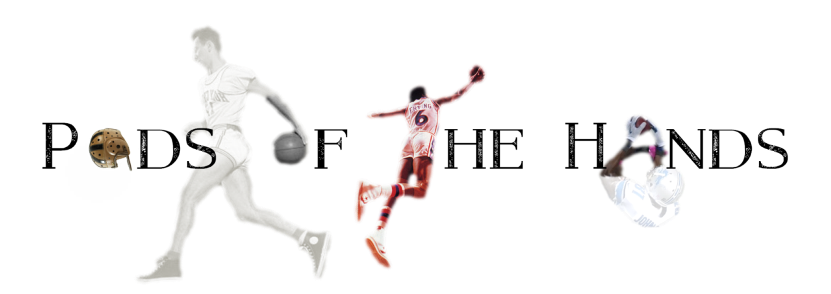 |
| Rich Sherman administers a critical pass deflection. |
A PD occurs when a defender deflects a pass or dislodges a to-be-caught ball from the grasp of a receiver or otherwise actively prevents a reception (without penalty). A PD is a productive play for the defense and an unproductive play for the offense. There is a caveat to that, however: a PD on 1st, 2nd, or 3rd down is diminutively productive for the offense in that it ensures another down (i.e., no turnover).
There is no progress in obtaining a 1st down on the down in which a PD occurs. Likewise, a PD reduces by 1 the quantity of downs available to the offense. Ultimately, a PD indefinitely results in zero yards gained offensively or allowed defensively. Because of this, established per-pass or -attempt values such as Y/C-, Y/A- or N/YA-allowed would be inaccurate because those values are calculated using yardage of offensively productive passes (i.e., yardage incurred on plays generating 1st downs and TDs).
Concretely, a down of zero gain yields a yardage value of zero, duh. Abstractly, the yardage value of a down with zero gain—and thus, the yardage value of a PD—varies depending upon context, of course. Game importance, game score, down, and the yards needed to secure another 1st down are each salient. So, for me, the dilemma entailed identifying a team-specific, discrete yardage value that, in the aggregate, accurately represents a PD.
Additional complexities arise because a PD is but one of many unproductive—or less than optimally productive—offensive passing outcomes. First quarter, tie game, 3rd and 10 at their own 20, for example, the QB hits his targeted WR on a bubble. As the WR secures the ball he is tackled harmlessly for a gain of zero. The play was unproductive because the team fails to secure a 1st down. Consider the same 3rd and 10 but instead, the QB successfully passes to the WR for a gain of 8. The offense fails to secure a 1st down and punts away possession. Although this second example is also unproductive, it is marginally more productive than the first example-play because the 8-yard gain conceivably reduces the opponent’s starting position. Thus, we need to quantify unproductiveness.
Metrics judiciously more refined and discriminative than anything you’ll probably ever read about on POTH provide some insight. For instance, Football Outsiders have identified expectations of offensive success. An offense shall accrue 45%, 60%, or 100% of needed yards on 1st, 2nd, or 3rd down, respectively. On 1st and 10, then, an offense ought to gain at least 4.5 yards for a play to be considered productive; for 2nd and X, 60% of X; and for 3rd and X, at least X yards. With this model then, offensive unproductiveness is the failure to obtain those thresholds and the PD-yards value should, given my definition, be equivalent to the average yards allowed on unproductive pass plays. Readily obtainable via the publicly available play-by-play data (here and here) are the yards generated on unproductive completions.
To review, we are obtaining 6 summative data points per team per season:
- quantity of completions of <50% yards to go on 1st down and the
- quantity of yards accumulated therein;
- completions of <60% yards to go on 2nd down and the
- accumulated yards; and
- completions of <X yards to go on 3rd and X and the
- yards on 3rd and X.
 |
| Table 1. Descriptive statistics for average yards allowed per unproductive completion by team defenses, 2010-2014. |
I obtained the data points described above for all NFL teams in the 2010 through 2014 regular seasons. Table 1 contains some descriptive stats for the average yards allowed per unproductive completion per team defense. Across seasons, the 2013 Buffalo Bills were lowest and the 2011 NY were highest. Across all seasons, there is slightly significant kurtosis and minute skewness but, with the exception of 2013, each individual season is normally distributed. Additional statistical procedures reveal that the effect of PD yards on starting position is almost entirely attributable to the action of PDs and not unproductive yardage.1
I could discuss the weaknesses of this approach of quantifying PD yards but I really don’t feel like it. Instead, I provide an anecdote in the following paragraph providing some perspective on the notion of productivity. Likewise, I provide a table at the close of the post which displays the simple correlations of PD yards. Aside from developing a method of quantifying PD yards for the purposes of appraising defensive backs’ influence on their teams’ offensive starting positions, I am intrigued by the concept of unproductive yardage. A topic for future posts, indeed.
 |
| Rob Bironas celebrates. |
 |
| Table 2. Correlations of Approximated Pass Deflection Yards and Pass Deflections with various variables across team defenses, 2010-2014. |
1Let us verify that PD yards influence field position independently of the effect of the yards allowed on unproductive passes. To do so we regress offensive (of the defensive team) average drive start positions onto unproductive yards and obtain residual values. We regress those residual values onto PD yards and find an infinitesimal decrease in the R2 of drive start on PD yards, from .10 to .08 when controlling for quantity of unproductive pass yardage. Let us then regress average drive start onto the quantities of PDs, obtain residuals, and regress those on PD yardage. Our R2 is essentially zero.
